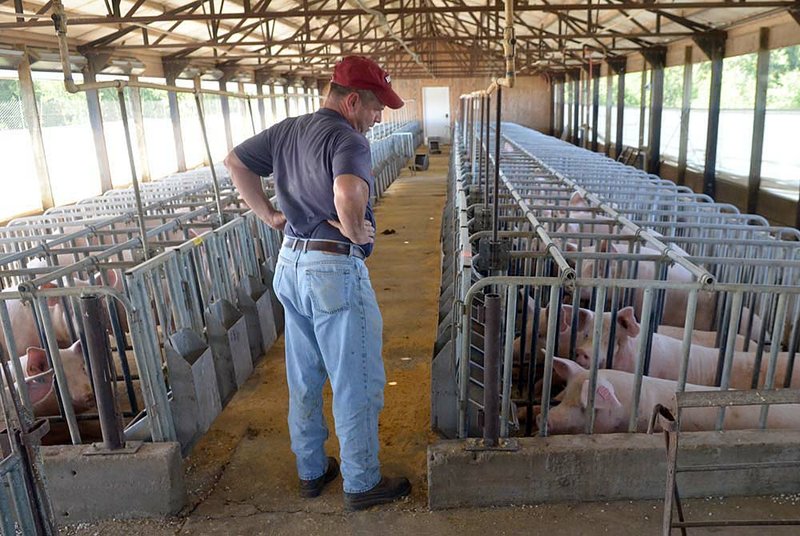LITTLE ROCK — A small team of researchers at the University of Arkansas at Fayetteville are experimenting with techniques to lessen the environmental impact of swine manure.
The U.S. Department of Agriculture-affiliated study is part of a broader $53 million effort to study the effects of climate change on agricultural production announced in June.
Challenges associated with manure disposal on pig farms include the release of methane gas from nearby waste lagoons and the breakdown of nitrogen in the animal’s excrement into harmful byproducts such as ammonia and nitrous oxide.
Hog experts in Arkansas hope the study, which encompasses the entire life cycle of a commercial pig, will lead to the adoption of cost-effective manure disposal techniques.
The university will have an estimated $2.3 million, over the next five years, to put toward its research effort outlined in the “Integrated Resource Management Tool to Mitigate the Carbon Footprint of Swine Produced in the United States.”
The UA is partnering with Purdue University in West Lafayette, Ind., and Virginia Tech in Blacksburg on the project.
“All problems have solutions,” Charles Maxwell, a professor of animal science at UA-Fayetteville, said about the complexities of waste disposal and harmful waste byproducts.
Maxwell is among UA researchers who will evaluate alternative manure handling techniques to reduce the amount of manure nutrients, such as nitrogen and phosphorus, through conversion into another usable form.
The university will also work to develop techniques to separate liquid and solid waste in order to concentrate phosphorus - a much-needed soil amendment in certain parts of the country. A mobile solids separation system is under construction.
Another topic that UA researchers will study is the use of algae in waste water to reduce levels of nitrogen and phosphorus.
Greg Thoma, a professor of chemical engineering at UA-Fayetteville, said algae is being studied to concentrate the nitrogen in a manure lagoon.
A rake like tool will be used to separate wet matter, which will be dried for other uses, he said.
Both techniques have the end goal of commercial application and adoption.
The majority of the nation’s 66.6 million hogs are raised by producers with inventories of more than 5,000 animals, according to 2011 USDA data.
And most animals are kept in confined feeding operations, where thousands of pigs housed under the same roof generate millions of tons of waste each year.
An estimated 110 million tons of waste was generated in one year by the 57.5 million hogs owned by U.S. producers, according to 1997 Census of Agriculture data used by the Natural Resources Defense Council and the Clean Water Network.
Waste disposal at a commercial pig farm begins with the collection of solid and liquid materials in pits beneath animals’ living area.
“The pits are flushed every week or two weeks, typically with recycled lagoon water,” Maxwell said, referring to the holding pond often found near one of the buildings.
Waste pits empty into a nearby waste lagoon which is emptied onto cropland or pastures.
Arkansas hog farmers whose inventory totaled 160,000 in December, will also benefit from the findings with the help of extension agents such as Karl Van Devender, a biological and agricultural engineering professor with the UA’s Division of Agriculture in Little Rock.
“Hopefully the end result [of the UA’s project] will be the minimization of climate impact and maximum production efficiencies,” Van Devender said.
Most of the manure produced by a 300-sow farm - an average size in Arkansas, which is considered a farrowing, or birthing, state - winds up on fields as a soil amendment, he said.
Manure, however, is applied to land used for hay and beef production but in many cases the phosphorus heavy manure fertilizer is applied to land that already has above-average levels of phosphorus.
“With solid separation, you could capture the phosphorus and move it to a row crop field, where it’s more needed,” Van Devender said. “And that’d be a good thing.”
Business, Pages 69 on 10/02/2011
